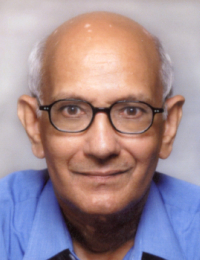
Kailash, called Chanda by his parents, is an electrical engineer, who was born in Tijara, which is even now a very small city in Rajasthan. He lived in East Germany from 1965 to 1971, where he married Annemarie, a German, in 1969. Since 1971, he has lived in Vienna, Austria. He became a widower when Annemarie died of cancer in 2004.
It’s transfer time! 1946-57
My father was a civil servant in Rajasthan, who was transferred frequently in the early part of his career. So, as children (six brothers and two sisters) we never stayed in one city for more than four years and in some not even for two years. Between 1946, from where my memory starts, until 1958, when I started to go college, we lived, in succession, in Alwar, Bharatpur, Alwar, Udaipur, Jhalawar, Bikaner, and Ajmer, all in Rajasthan. It is often said that children suffer from transfers because each time they move to a new city they face a new school, a different way of teaching, new classmates, new books, etc.
Fortunately, I do not remember suffering in my school performance from these transfers\; instead, I can clearly remember having enjoyed the transfer upheavals.
The transfer news was always a big shock/event and it changed the family life like an earthquake. Mummy always had to do the biggest share of the work for transfers. We children were of no help to her and did not take part in any serious activity. A lot of food and snacks were cooked in preparation of the journey and packed in various boxes, so that we hardly ever bought anything at the train stops.